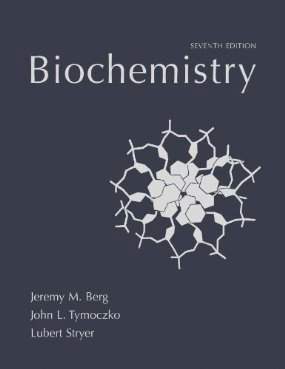Starting up...

This is a quick preview of the lesson. For full access, please Log In or Sign up.
For more information, please see full course syllabus of Biochemistry
For more information, please see full course syllabus of Biochemistry
Biochemistry Amino Acids, Continued
Lecture Description
This lecture continues the classification and structural configuration of the most important amino acids, including lysine, arginine, histidine, and others. It also includes some of the important reactions of amino acids. Cysteine can dimerize to form cysteine, which has a disulfide bond. Amino acids with aromatic groups can generally absorb UV light, making them easier to identify and analyze. Some proteins also have derivative or modified amino acids such as hydroxyl lysine, which has an extra OH group, and r-carboxy glutamate, which is relatively uncommon but has an extra carboxyl (COO⁻) group.
Bookmark & Share
Embed
Share this knowledge with your friends!
Copy & Paste this embed code into your website’s HTML
Please ensure that your website editor is in text mode when you paste the code.(In Wordpress, the mode button is on the top right corner.)
×
Since this lesson is not free, only the preview will appear on your website.
- - Allow users to view the embedded video in full-size.
Next Lecture
Previous Lecture










































 Answer Engine
Answer Engine




0 answers
Post by Parth Shorey on October 11, 2016
Is this Q&A active?
1 answer
Wed Sep 17, 2014 10:25 PM
Post by Josh Bernier on September 16, 2014
For the structure of Arginine, I believe there are actually 3 methylene groups in the chain. Also, I was curious if you had any tips for remembering the single letter symbols, such as Mneumonic devices, etc. Or is this something that will just require shear memorization through, as you continually emphasis and is much appreciated, actively drawing out the structures and making the associations through repetition? Thanks so much for all your time! Your lectures are absolutely fantastic and have only furthered my love and interest in the chemical sciences.
1 answer
Thu Jan 30, 2014 3:01 AM
Post by John Joaneh on January 29, 2014
at approximately 17:30 in this video, i noticed once of the carbons is missing a hydrogen. this is after forming the disulfide bond. the first carbon on that structure is missing a hydrogen.. unless that was intentional and i misunderstood something.
1 answer
Wed Jan 22, 2014 4:06 PM
Post by Seth Angelo on January 19, 2014
This videos are great. I like the way you explain the material. Out of curiosity, at any time will any of these videos be updated and/or do you plan on adding more to this series?
2 answers
Last reply by: Seth Angelo
Sun Jan 19, 2014 1:02 PM
Post by Seth Angelo on January 19, 2014
Does the material presented here follow the structure/format of Lehninger 5th ed? If so, excellent because that's the book I'm using.
1 answer
Sat Nov 9, 2013 2:02 AM
Post by Salima Tawab on November 8, 2013
why does the titration of lysine is likely to show only two buffer regions not three, on a titration curve? can u please explain how to show this on a graph or just in words? thanks
3 answers
Last reply by: yana gegelia
Sun Dec 27, 2015 8:50 AM
Post by marsha prytz on May 24, 2013
Shouldn't the 5 hydroxy lysine have only 1 hydrogen at the 5th carbon where the hydroxy is attached? If it had two it would have 5 bonds instead of 4.
1 answer
Wed Apr 3, 2013 2:21 AM
Post by cuong Le on April 3, 2013
Yes or No question. Regarding amino acid classification, histidine should be grouped under aromatic family. Yes?